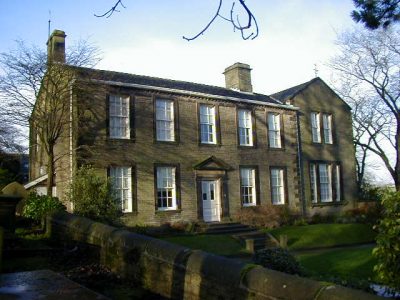Charlotte Brontë – Life, Career & Death
Charlotte Brontë was a Victorian poet and novelist. Throughout Charlotte’s tragically short life, she, along with her two younger sisters, have produced some of the greatest literature to ever have originated from Yorkshire.
The Yorkshire writer’s most famous novel is “Jane Eyre” which has since become a modern Western classic. Charlotte’s other works have also received much acclaim and each of these have been inspired by the windswept moors to the West of Bradford.
Page Contents:
- Growing Up
- Education
- An Aspiring Writer
- Early Work
- Another Trick Up Her Sleeve
- Jane Eyre
- Reflecting Real Life
- Tragedy Strikes Again
- Rising to Fame
- Marriage
- The Death of Charlotte Brontë
- The Brontë Parsonage Museum
- The Legacy of Charlotte Brontë
Growing Up
On the 21st of April 1816, Charlotte Brontë was born in Thornton, Bradford. She lived in the West Riding with her parents Maria and Patrick, who was a clergyman, along with her two older sisters Maria and Elizabeth.
Soon after Charlotte was born, she was quickly followed by three more siblings called Anne, Emily, and their brother Branwell. Charlotte’s younger siblings had been born a year apart between 1817 and 1820.
In 1820, Patrick was sent to be a perpetual curate at the church in Haworth. The Brontë family then made the move from Thornton to the village of Haworth which is roughly 6 miles away.
Education
In 1824, the eldest four girls were sent to the Clergy Daughters School at Cowan Bridge in Lancashire. The conditions at this school were reported as extremely poor and it’s known that Charlotte didn’t enjoy it.
The school at Cowan Bridge was widely blamed for the deaths of Charlotte’s two older sisters Maria and Elizabeth who both perished from tuberculosis in 1825. As a result, Charlotte became the eldest child in the family and had to take a lead role in bringing up her siblings.
Charlotte and Emily were immediately withdrawn from the school and instead were taught at home. In 1831 to 1832, Charlotte Brontë attended Roe Head School in Mirfield and for a while became a governess for several Yorkshire families in the late 1830’s.
One of her charges was an unruly child from a family in Lothersdale called John Benson Sidgwick. John once threw a bible at young Charlotte which is said to have been the inspiration for a similar scene in the opening chapter of “Jane Eyre”.
In 1842, both Charlotte and Emily were funded by their aunt to study at Constantin Heger’s boarding school in Brussels. In return they taught English and music respectively while enhancing their cultural perspectives and improving their French.
During her time in Brussels, Charlotte fell in love with Heger who rejected her advances. She returned to Yorkshire a heartbroken woman with her sister however this incident provided inspiration for her writing career.
An Aspiring Writer
From a very young age Charlotte Brontë had written short stories and poems, especially with her younger brother Branwell. In 1846, she published some of these along with others penned by her other siblings Anne and Emily who were also aspiring writers.
When publishing the books, they used the pseudonyms of ‘Currer’, ‘Ellis’ and ‘Acton Bell’. The siblings decided to use these male names because they were afraid that their work would be judged differently if they were seen to be the work of women.
The poems only sold two copies and were deemed an epic failure in the literary world. However, by the following year in 1847, both Charlotte and her two sisters had all enjoyed resounding success with their own individual novels.

Early Work
Throughout 1846, Charlotte wrote her first book called “The Professor”. Within the same year, Anne had started to work on “Agnes Grey” while Emily created arguably the most famous Brontë book “Wuthering Heights”.
Each book manuscript was sent to all of the publishers in London as a package of three containing the novels by each sister under the same three pseudonyms. Both Anne and Emily’s efforts were eagerly accepted however Charlotte’s was rejected by all of the publishers she sent manuscripts to.
Another Trick Up Her Sleeve
Luckily, Charlotte had something else in the pipeline. On the side she had been writing a second novel called “Jane Eyre, an Autobiography” which was based on her own personal experiences at school as work as a governess.
The publisher Smith, Elder and Co of Cornhill, London who had shown the most interest in her first novel immediately printed “Jane Eyre”. Her novel was published before either Anne or Emily’s had reached the presses.
Jane Eyre
This story charts the life of the titled character from the age of ten. She goes to live with her aunt and uncle after the death of her parents and is mistreated by her relatives who exclude her from family activities and make her life a misery.
She finally opens up to the family doctor when she falls ill. The doctor then suggests sending her to Lowood School for poor orphaned girls which her surrogate family agrees to.
The school ends up being cold, hard and dirty where the food rations are poor and the pupils fall ill with tuberculosis. Lowood was based on her experiences at Cowan Bridge School and the deaths of her older sisters in 1825.
Eventually, Jane Eyre becomes a governess at Thornfield Hall in the service of Mr Rochester who she eventually falls in love with. He proposes marriage and the preparations commence.
It’s then later revealed by a lawyer that Rochester is already married to another woman called Bertha Mason. When asked, Rochester explains that he was tricked into marrying her and discovered that she was rapidly descending into madness. As a result he locked Bertha in the attic at Thornfield Hall to be attended to only by his maid Grace Poole.
Bertha escapes the attic and exacts revenge by tearing Jane’s veil in two which causes a deeply upset Eyre to run away and sleep rough on the moors. Eventually, Jane finds shelter at her cousin’s house and works as a teacher in the village.
One night, Jane feels the urge to return to Thornfield House to find that the property had been burned down by Bertha, who committed suicide, leaving Rochester blinded and without his hand. Rochester and Jane marry and his sight returns to see his firstborn child.
Reflecting Real Life
Many of the elements in the story of Jane Eyre reflect events that have happened in Charlotte Brontë’s own life. These include attending an impoverished school, falling in love with a senior man, and her work as a governess.
In 1847, Ann and Emily Brontë’s novels were both published. One of these novels included “Wuthering Heights” which joined Jane Eyre in becoming an all-time classic.
Tragedy Strikes Again
Just as all of the Brontë’ sister’s hard work had paid off, fate struck the family once again. In September 1848, Branwell died of chronic bronchitis followed closely by Emily Brontë in December of tuberculosis.
A year later in 1849, Anne caught the deadly disease and in May she also succumbed. A grief stricken Charlotte started writing her third novel “Shirley” to try and get over the tragedy which had befallen her family once more.
Rising to Fame
The success of “Jane Eyre” and her two subsequent novels also meant that her fame rose within writing circles. She was invited down to London where the northern Charlotte mixed rather uncomfortably with the capital’s literary crowd.
Everyone was eager to meet the real person behind the novels which had become the talk of London. During these visits she struck up a friendship with fellow novelist Elizabeth Gaskell. The two weren’t particularly close but had great respect for each other.
By this point, Charlotte Brontë had already revealed her true identity as a female author to her publishers which happened after the publication of “Shirley” in 1849. Charlotte began to split her time between visiting them in London and looking after her ageing father back home in Haworth.
In 1853, she wrote her fourth novel called “Villette”. Like her previous novels, this one also examines the issues in Charlotte’s own life.
“Villette” is about a girl called Lucy Snowe who travels to France in order to teach in a fictional town called “Villette”. She falls in love with fellow teacher Paul Emmanuel based upon the real life Mr Heger in Brussels but due to circumstances cannot marry him.
Marriage
Back in Haworth, Charlotte Brontë had an admirer called Arthur Nicholls who had loved her for a number of years.
Arthur was Charlotte’s father’s curate at the local church. Initially she, along with her father Patrick, had declined his offer of marriage due to him not having much money.
Gaskell was supportive of the marriage and decided to help Arthur with his finances. Charlotte became increasingly attracted to Arthur over time and the two happily married in 1854.
The Death of Charlotte Brontë
Shortly after the marriage Charlotte fell pregnant. However, despite this joyous event things took a turn for the worst when she became rapidly ill.
On the 31st of March in 1855, Charlotte and her unborn child died just three weeks before Charlotte’s 39th birthday. It was originally said that she died from consumption but it’s now believed that she died from dehydration and malnourishment caused by morning sickness.
Two years after their death in 1857, her first rejected novel “The Professor” was published. In the same year, her biography was written by Gaskill although parts had to be toned down about her feelings for Heger and details about Cowan Bridge to avoid legal action from the institution.

The Brontë Parsonage Museum
Nowadays, the life of the Brontë family is commemorated at the parsonage which they grew up in and wrote their famous novels. After father Patrick’s death in 1861, the contents of their home began to be auctioned by friends and former servants.
Eventually, it was decided that these artefacts should be preserved. A group who would be ensuring the artefacts safety was The Brontë Society and would be kept in a museum above the village’s penny bank.
In 1928 the parsonage was bought and given to the society who have used it as a museum dedicated to the Brontë family ever since. This is now a popular tourist attraction that is visited by people from all over the world.
The Legacy of Charlotte Brontë
Charlotte Brontë’s works continue to be part of classic Western literature. Since then, there have been film adaptations made.
This famous Brontë sister was a survivor who interspersed with personal tragedy contrived to write novels. Her works were ahead of their time featuring strong independent female leads who were put in situations which featured in the author’s real life.
Her inspiration of the surrounding moorland of Haworth helped bring to life her imagination in writing some of the greatest works to ever come from Yorkshire and indeed this country.

